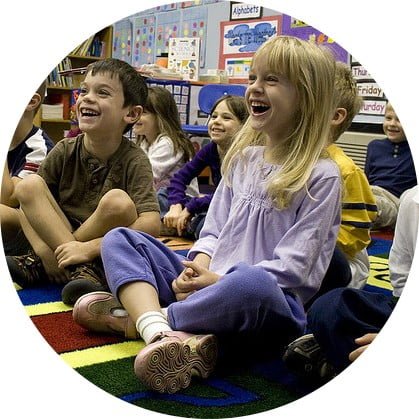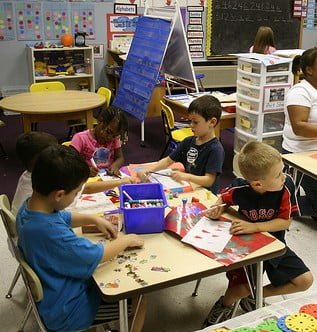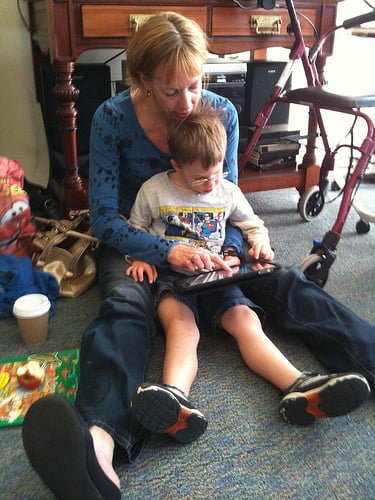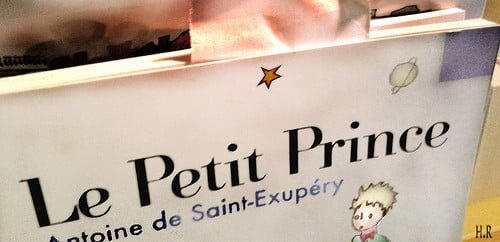Raising bilingual children: our guide to the best techniques
 You’ve decided you want to teach your kids French, but where do you start?
You’ve decided you want to teach your kids French, but where do you start?
Malheureusement there is no magic formula nor secret recipe to make your child bilingual. It takes commitment and hard work, but many parents will tell you it’s well worth the effort.
Once you’ve taken the time to consider whether it’s right for your family, the next step is selecting a method.
There are a number of ways to raise bilingual children. We’ve compiled a guide to the different methods, to help you decide which ones best suit the needs de votre famille.
One Parent One Language (OPOL)
This is one of the most common methods for raising bilingual children. The premise is as simple as it sounds: one parent speaks one language, the other speaks another language. For example, maman always speaks to the child en français, and dad always speaks in English.
If one parent is a native French speaker, they will likely be the parent speaking French. But keep in mind that research shows a child needs to be exposed to a language for 30% of their waking time to reach fluency. This means the parent they spend the most time with should be the one speaking the ‘minority’ language, that is, the language that is not native to their current home country.
“The key to success is to figure out what technique or techniques will work best for you. Everyone is different and raising a bilingual child can be both rewarding and challenging.”
With this method it’s also important to show your child that other people speak the language too. If you live in an English-speaking country, you might like to consider enrolling in a French playgroup, watching French cartoons or even visiting friends who speak French.
One Place One Language/ Minority Language At Home (OPOL/ML@H)
By allocating a certain place to speak the minority language, you can ensure your child will receive adequate exposure to each dialect. These methods also highlight the importance of the ‘community’ language.
This helps to teach your child when are where they should speak English and French. For example you may choose speak the minority language á la maison or dans la voiture and the community language everywhere else.
It’s very important for your child to understand the significance and practical use of their second language. They need to interact with les autres locuteurs, as this helps them recognise the value and necessity of their ‘minority’ language.
If you speak to your child exclusively in French, it’s normal to expect delays in English. This should balance out when they attend kindergarten or spend more time in an English-speaking environment, or vice versa.
Immersion with other bilingual children
If your child isn’t getting enough exposure to the ‘minority’ language you can also look into immersion programs. By attending an immersion school or kindergarten, joining a French speaking playgroup or an intense immersion program, your little one will learn without even knowing it.
Often kids learn very well from other children. Les enfants are sometimes the best teachers, whether it’s making the same mistakes or just having simple conversations. All of this helps to build their confidence and puts more value on the minority language.
“There’s really no better way to learn than to be in France. It’s immersion on steroids, and the native accent is partout.”
If you really want your child to excel, consider sending them to a French language school to build on their existing knowledge.
The benefits of immersion mean you rapidly build your vocabulary, your accent improves and you develop a deeper understanding of the language.
Teaching and Learning
If you don’t already speak français or you aren’t fluent, you can always learn alongside your little one.
This is a gift for you both and a great way to encourage your learning as well.
Watching French cartoons and children’s shows with vos enfants – no matter what your age – is a great way to pick up the fundamentals of any language.
In her article ‘Raising Bilingual Kids: Benefits and Techniques’, Annie from Phdinparenting.com lists the various resources you might like to invest in.
“You can invest in buying DVDs with movies and language lessons, CDs with songs and lessons, books and magazines, dictionaries, and so on,” she suggests. “Or you can use a combination of the library and the Internet to build your own materials. Online you can find pronunciation guides, You Tube videos, dictionaries, and much, much more.”
As your child gets older you can even attend weekend or night classes together. You may not ever be bilingual but by starting your child early you’ve given them an invaluable foundation.
Other activities for French language learning
There are countless activities you can do with your children to enhance their French and help to make the language fun.
Kids love interaction and getting them to sing and dance en français is a great way to keep them entertained and help them learn new vocabulary.
Reading to your children in French is another fantastic way to keep them enthused. Once your child is reading, providing them with les livres français is the perfect way to teach them about spelling and grammar.
If your children prefer visual learning and aren’t so big on reading try using French comic books or les bandes dessinées. You may also find French TV and films to be très utile.
Don’t forget the roll other kids can play, be it in a French speaking play group, older siblings or family friends. Your child will feel validated hearing other kids speaking French too.
And how about a trip to France? There’s really no better way to learn than to be in France. It’s immersion on steroids, and the native accent is partout. Holidays to France or French speaking countries are another way to get your children excited about French language and culture.
The one golden rule to remember…
Having one method set in stone will not work for everyone. In some cases a mix of these methods will be more sustainable. You may try different techniques as your child gets older to enhance their French or English.
The key is to be flexible, if one style isn’t working then try something new. We all have different learning styles, perhaps your child is more visual or more kinesthetic, if this is the case find activities that will engage them.
“It’s very important for your child to understand the significance and practical use of their second language.”
As Christina Bosemark from Ominglot.com explains in her article ‘Raising Bilingual Children: The Different Methods to Success,’ it’s okay to be flexible.
“Frankly, any pattern that works for your family and provides enough interaction in the second language is fine,” she says. “Examples of such variations are: (1) one language is spoken every day, the other on extended vacations to another country; (2) one language is spoken in a certain location (e.g. if the children attend an immersion program), the other at home.”
The key to success is to figure out what technique or techniques will work best for you. Everyone is different and raising a bilingual child can be both rewarding and challenging.
Do you have bilingual children? What techniques have worked for you? Join the conversation and add your stories in the comment box below!
Image Credits1. kindergarten is fun by woodleywonderworks, via Flickr.
2. Choosing an Elementary School by woodleywonderworks, via Private School Review.
3. iPad magic by robynejay, via Flickr.
4. Petit Prince by Louve Solitaire, via Flickr.









